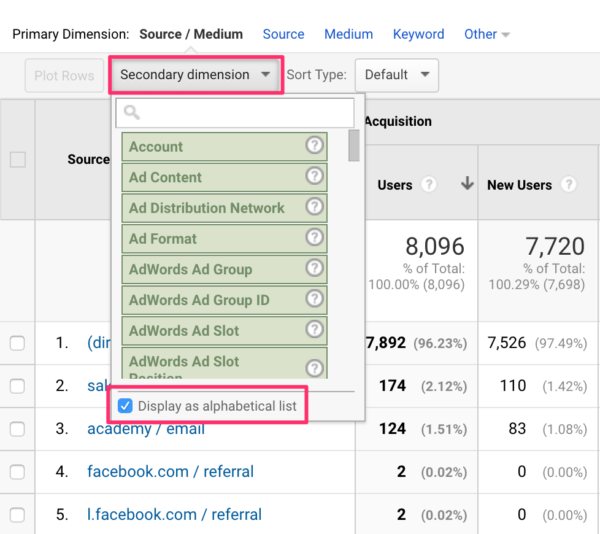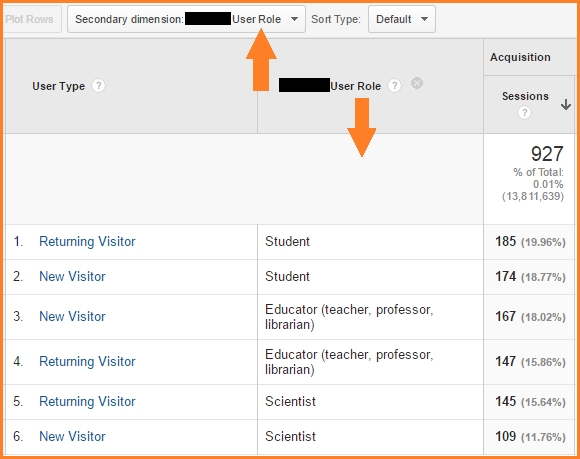A Comprehensive Overview to 'Secondary Dimensions' in Google Analytics: Insights Revealed
A Comprehensive Overview to 'Secondary Dimensions' in Google Analytics: Insights Revealed
Blog Article
Navigating the Depths of Additional Measurement in Google Analytics: A Thorough Exploration on Its Functionality
In the realm of electronic analytics, the ins and outs of information analysis frequently hold the key to opening beneficial insights. Within the extensive toolkit of Google Analytics exists a function that functions as a surprise gem for those that seek a deeper understanding of user habits and website efficiency. Secondary dimensions, though seemingly simple at initial glimpse, nurture a wide range of untapped prospective waiting to be utilized. As we start this trip to check out the nuanced functionality of secondary dimensions, we will reveal exactly how this attribute can illuminate patterns, reveal connections, and eventually lead the way for informed decision-making in the electronic landscape.
Understanding Secondary Dimensions in Google Analytics

Understanding how second dimensions work is vital for leveraging the complete power of Google Analytics. By integrating main metrics with second measurements, you can get important understandings that drive informed decision-making and optimization methods.
Leveraging Additional Dimensions for Information Analysis
Structure upon the foundational understanding of how second measurements enhance data analysis in Google Analytics, the application of these extra layers of information comes to be critical in drawing out valuable understandings for notified decision-making and optimization strategies. By leveraging additional measurements, experts can dive much deeper into the efficiency metrics by adding more context to the key measurements, hence revealing concealed patterns and relationships that may not be apparent initially glimpse. This deeper level of evaluation makes it possible for companies to better understand customer behavior, identify patterns, and determine locations for improvement.
Furthermore, second dimensions offer a more comprehensive sight of the data, enabling for division based upon numerous parameters such as demographics, devices, traffic sources, and more. This division helps with a much more granular evaluation, making it possible for companies to tailor their projects and methods to details audience sectors for improved targeting and customization. Basically, the tactical use additional measurements equips companies to make data-driven choices that drive development and success in the digital landscape.
Advanced Techniques for Secondary Measurement Implementation
Discovering detailed methods to harness the complete potential of secondary measurements in Google Analytics boosts the depth and class of information evaluation for critical decision-making. One sophisticated technique for applying secondary measurements is using custom measurements. By defining custom measurements, individuals can segment data even more to gain even more particular understandings into individual actions, such as tracking interactions with certain elements on a website or keeping an eye on the performance of a certain advertising project. An additional sophisticated technique is the use of regex (regular expressions) within additional measurements. Regex enables even more adaptable and powerful pattern matching, enabling users to produce complex filters directory for information evaluation. Additionally, combining secondary dimensions with innovative sections can provide much more granular understandings by applying several layers of division to the data. This technique permits for a much deeper understanding of individual behavior based on different requirements all at once. Implementing these innovative methods for secondary dimensions in Google Analytics equips customers to carry out much more innovative analysis and make data-driven decisions with precision.
Interpreting Insights With Secondary Dimensions

When translating insights with second dimensions, it is important to consider the context of the data and exactly how various dimensions communicate with each various other. For instance, understanding which details traffic sources bring about greater conversion rates or identifying which gadgets individuals choose for making purchases can supply workable understandings for maximizing advertising campaigns and boosting overall internet site performance. By meticulously checking out the information with additional measurements in mind, services can make informed choices that drive significant results and improve their digital visibility.
Optimizing Performance With Secondary Measurements

One crucial way to enhance performance with second measurements is by segmenting information much more granularly. This allows you to separate details variables that may be influencing your metrics and obtain a far better understanding of what drives success or failing in your digital efforts. By incorporating additional measurements such as 'device category' and 'landing web page,' you can determine which device types are most effective for certain landing pages, enabling you to customize your techniques as necessary.
Moreover, using secondary measurements can help you determine fads, patterns, and connections that might not be apparent when assessing information with main measurements alone. This deeper level of analysis can lead to more informed decision-making and inevitably enhance the general performance of your web site or digital advertising important link and marketing projects.
Conclusion
To conclude, additional measurements in Google Analytics play a vital role in improving information analysis and giving much deeper insights right into site efficiency. By making use of advanced strategies and translating the data successfully, organizations can enhance their techniques and improve general performance. Understanding the performance of additional measurements is essential for making notified choices and driving success in the electronic landscape.
By leveraging second measurements, analysts can dive much deeper into the efficiency metrics by adding more context to the key dimensions, hence revealing concealed patterns and relationships that might not be evident at first glimpse. One advanced technique for executing second dimensions is the use of customized measurements.Having understood advanced methods like custom dimensions and regex for secondary measurement application in Google Analytics, the following vital action is analyzing the valuable insights obtained through these advanced information division approaches. Analyzing insights via additional measurements involves assessing the partnerships between the secondary and main measurements selected, discovering patterns, patterns, and relationships that may not be right away obvious when looking at the data in its totality.When analyzing insights via secondary dimensions, it is crucial to think about the context of the information and just how different dimensions engage with each various other.
Report this page